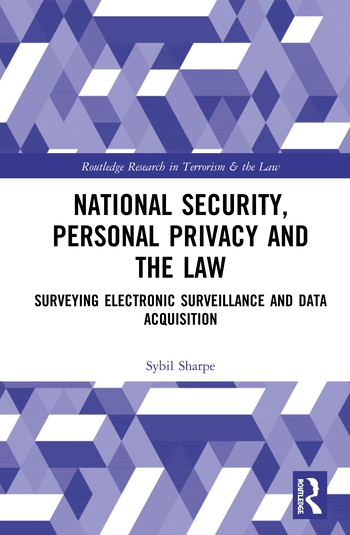The Power of Connectivity

Jeff Woodward wanted to do it right the first time. After all, you might only have one chance in your career to build a security system from the ground up.
When Panduit began planning its new world headquarters building, Woodward, who is senior manager for global environmental health, safety and security, wanted to ensure that security and the access control system would be cost effective, more efficient and meet Panduit’s long-term strategic goals.
Founded in 1955, Panduit develops and provides advanced solutions that help customers optimize the physical infrastructure and mitigate risk through simplification, increased agility, and operational efficiency. The company operates in 120 countries and makes its headquarters in Tinley Park, Ill. It has eight facilities in the U.S. and five locations internationally, and its areas of focus includes data centers, connected buildings and industrial automation.
“I was solely responsible for designing the security operations and I wanted it done right,” Woodward says. “Not only was I interested in the design from a security standpoint, but also to meet our company’s long-term strategic goals of energy efficiency.
“We wanted an access control system that would run Power over Ethernet to minimize the cost of cabling and power at all doors, so during the two-year planning period, we built an area in the existing building that we used as a proof of concept and moved the entire security department into that room to test future security, lighting and layouts so that when we built it, we could ensure that we didn’t make any mistakes,” he says.
Under Woodward’s direction, the new Panduit headquarters demonstrates the power of connected real estate for physical security, energy savings and collaboration across many departments. The foundation is Panduit’s own physical infrastructure solutions and Cisco wired and wireless networks, which provide coverage throughout the 280,000 square-foot facility. The network connects all of the company’s voice, video and data systems, including 9,000 building systems and sensors. Because Woodward integrated all building systems on the same network, he has eliminated redundant network and operational costs and enabled automated business processes that reduce costs, accelerate awareness of events and reduce energy consumption. About 120 IP video surveillance cameras monitor the building perimeter and the restricted areas, and Woodward and his staff can monitor live and archived video streams from a web browser on a PC or a smart phone. Cisco’s IP Interoperability and Collaboration System (IPICS) enables Panduit personnel and fire, police, and emergency medical services personnel to communicate directly, using any type of radio as well as a telephone, mobile phone, or PC with special client software.
If an IP video surveillance camera detects movement in an area where people are not allowed, the video surveillance system automatically directs a pan-tilt-zoom camera to follow the intruder. At the same time, the system sends a message to lock exterior doors, and signals nearby security managers by sending a prerecorded voice message.
An activated fire alarm can trigger the physical access control system from Woodward to open the gates for fire trucks and display evacuation instructions on LCD professional displays deployed throughout the building.
And when visitors arrive in the lobby, the receptionist can quickly find out if the sponsor is in the building because the visitor management system is integrated with the physical access control system.
The access control system is one area that Woodward's staff and employees have embraced. “From an employee standpoint we’ve had a strong security culture since we opened since the 1950s so the new access control system didn’t affect them in any way. It made it easier because we’ve moved to using smart cards. From a security operations standpoint, there are challenges to training security personnel on new programs. But those security operators understood what it was; they just needed to learn a new program.”
Panduit headquarters also features digital signs, which the company uses to deliver customer communications and employee news. Some of these displays have touch capability, and visitors can use them for an interactive experience with Panduit’s products. Displays in employee areas, such as cafeterias and elevator lobbies, broadcast internal news, including security information. “The digital signs solution enables us to distribute employee communications with less labor than if we put up and took down posters,” says Woodward. “We can keep our messages fresh, and play them in our Singapore office as easily as we can here at headquarters.”
MORE EFFICIENT STAFFING
Instead of building a separate security operations center and network operations center, Panduit combined them into a single unified operations center, eliminating redundant servers and networking system and enabling the two teams to collaborate for ongoing operational efficiency. “We are cross-training facilities personnel to recognize data center alarms so that they can take the appropriate actions,” says Woodward. “This reduces operational costs because facilities personnel are here on the weekends anyway.”Combining the workspace for facilities and IT personnel also reduces time spent investigating false alarms, because IT personnel can quickly find out if an alarm from a building system resulted from a power outage, for example.
“A challenge for us and the end of this whole process was that we consolidated our security program. We built a security operations center which we call our ‘Unified Operations Center’ and it includes security operations, network operations and building operations, so we’re all in the same room and we share the same tools. From a security standpoint, if we have a camera down, we typically call the network guys and now they are in the same room with us. We are sharing tools and collaborating better. And now we’re monitoring everything from that center, which gave us a positive ROI. We can respond to alarms from a door being held open. It’s a lot of wasted time and manpower to dispatch someone to a door being held open, and now we can investigate it via video. We’ve installed a camera to every single security device to minimize the operational expenses of always having to dispatch someone to a scene. Every access control reader, panic alarm and automatic external defibrillators has video with it, so we can tell immediately if it’s a true emergency or someone just testing the system. It really gives you intelligence.”
NEXT STEPS
The result of Woodward’s efforts includes more efficient security operations. Headquarters security personnel can monitor and control video surveillance cameras and building access controls for all global offices over the WAN. “We now have centralized security operations, eliminating the need for a full security operation at branch offices and saving $653,000 a year,” Woodward says. The investment will pay for itself in one and a half years.Woodward says that Panduit will continue to connect new building systems and energy-monitoring tools to the network as they become available, and add the same technologies in other global offices. Other plans include to integrate the access control system with network access controls, so that an employee who has not swiped a badge to enter the building, for example, cannot log on to a PC. He also wants to integrate the system with building systems so when the last person has left the building, for example, the system will communicate with building systems to reduce lighting and air conditioning, activate alarm zones and power down network switches and other electronic devices to reduce power consumption. Woodward can eventually share energy-consumption information with employees and visitors LCD displays throughout the building, which he hopes will inspire them to conserve.
Looking for a reprint of this article?
From high-res PDFs to custom plaques, order your copy today!








